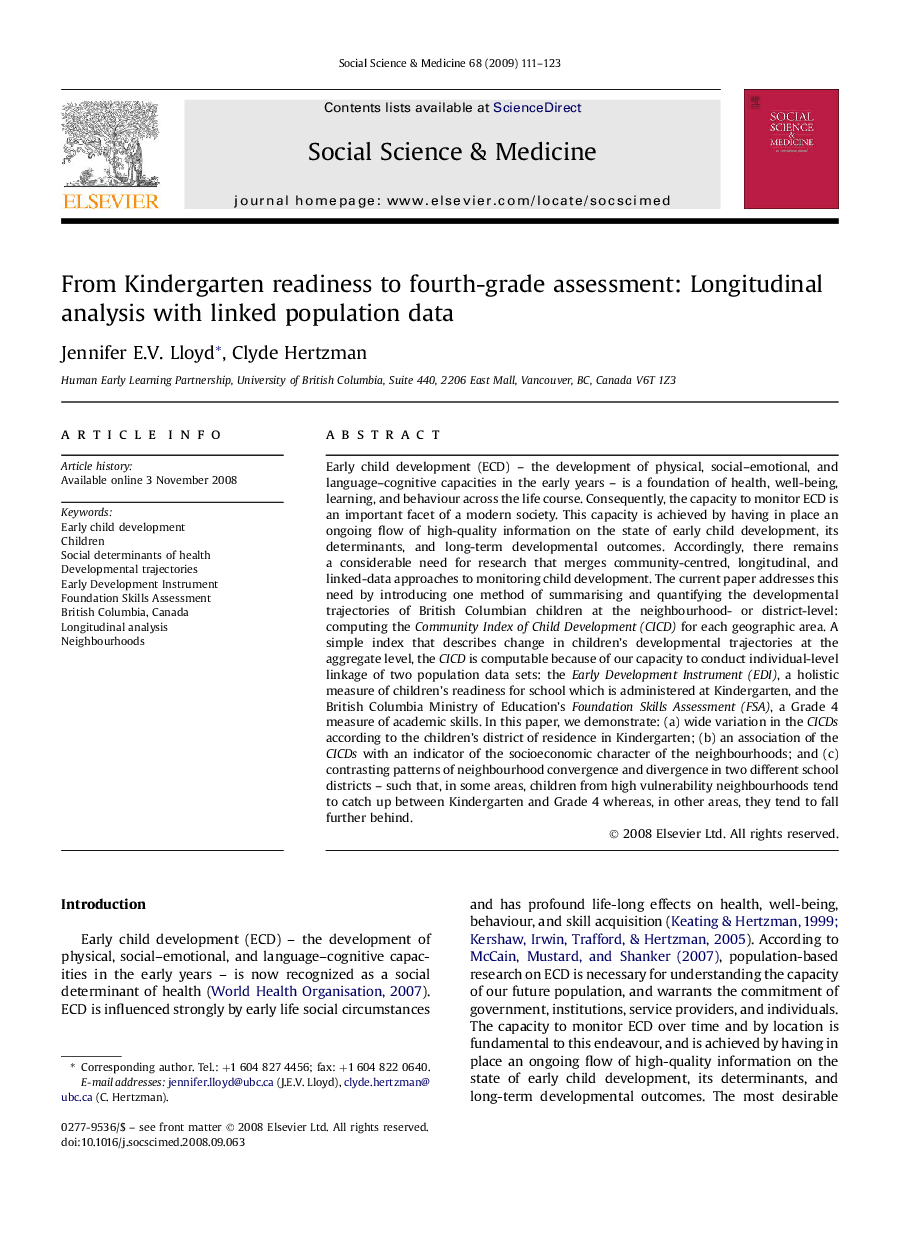| کد مقاله | کد نشریه | سال انتشار | مقاله انگلیسی | نسخه تمام متن |
|---|---|---|---|---|
| 954049 | 927622 | 2009 | 13 صفحه PDF | دانلود رایگان |

Early child development (ECD) – the development of physical, social–emotional, and language–cognitive capacities in the early years – is a foundation of health, well-being, learning, and behaviour across the life course. Consequently, the capacity to monitor ECD is an important facet of a modern society. This capacity is achieved by having in place an ongoing flow of high-quality information on the state of early child development, its determinants, and long-term developmental outcomes. Accordingly, there remains a considerable need for research that merges community-centred, longitudinal, and linked-data approaches to monitoring child development. The current paper addresses this need by introducing one method of summarising and quantifying the developmental trajectories of British Columbian children at the neighbourhood- or district-level: computing the Community Index of Child Development (CICD) for each geographic area. A simple index that describes change in children's developmental trajectories at the aggregate level, the CICD is computable because of our capacity to conduct individual-level linkage of two population data sets: the Early Development Instrument (EDI), a holistic measure of children's readiness for school which is administered at Kindergarten, and the British Columbia Ministry of Education's Foundation Skills Assessment (FSA), a Grade 4 measure of academic skills. In this paper, we demonstrate: (a) wide variation in the CICDs according to the children's district of residence in Kindergarten; (b) an association of the CICDs with an indicator of the socioeconomic character of the neighbourhoods; and (c) contrasting patterns of neighbourhood convergence and divergence in two different school districts – such that, in some areas, children from high vulnerability neighbourhoods tend to catch up between Kindergarten and Grade 4 whereas, in other areas, they tend to fall further behind.
Journal: Social Science & Medicine - Volume 68, Issue 1, January 2009, Pages 111–123